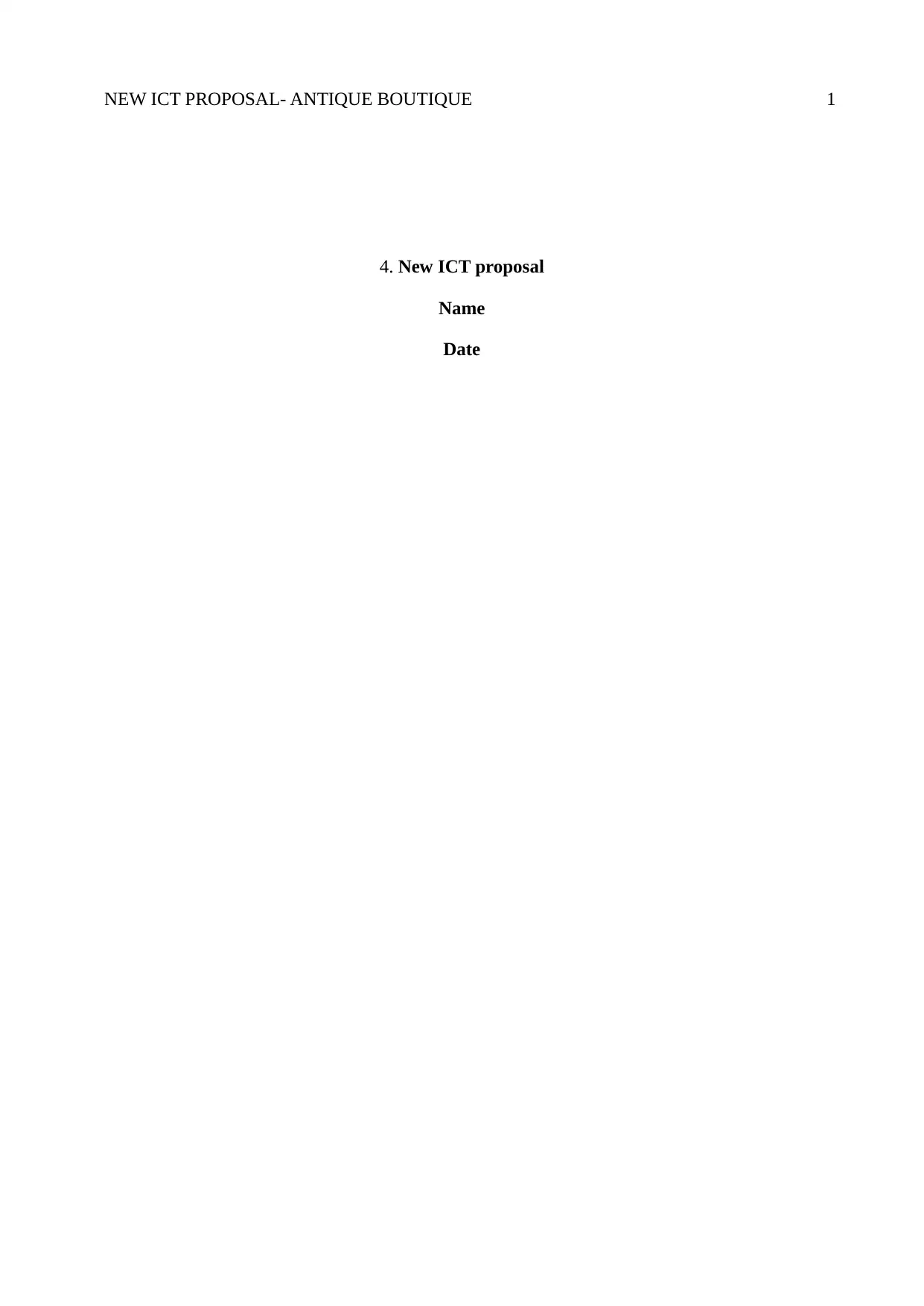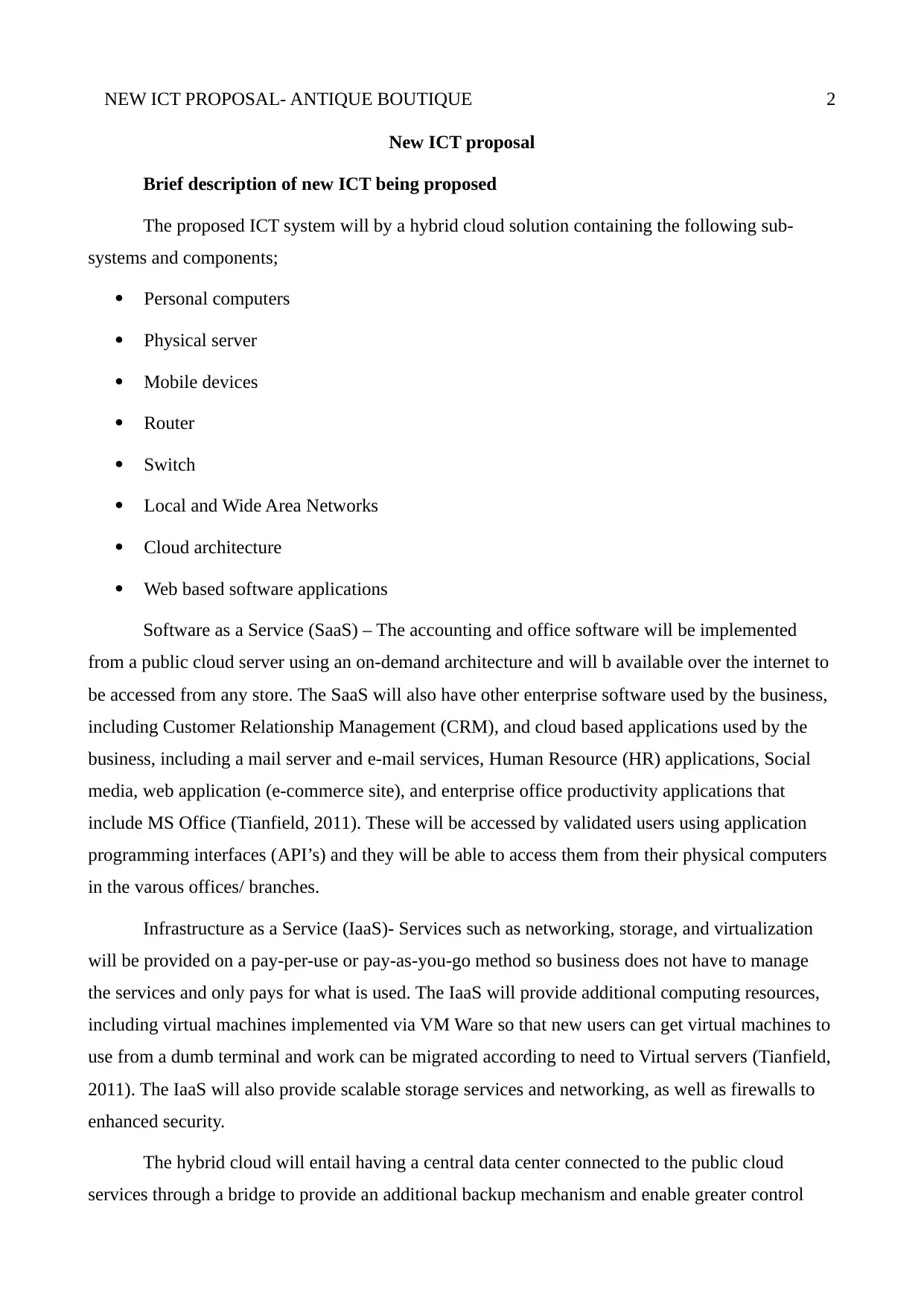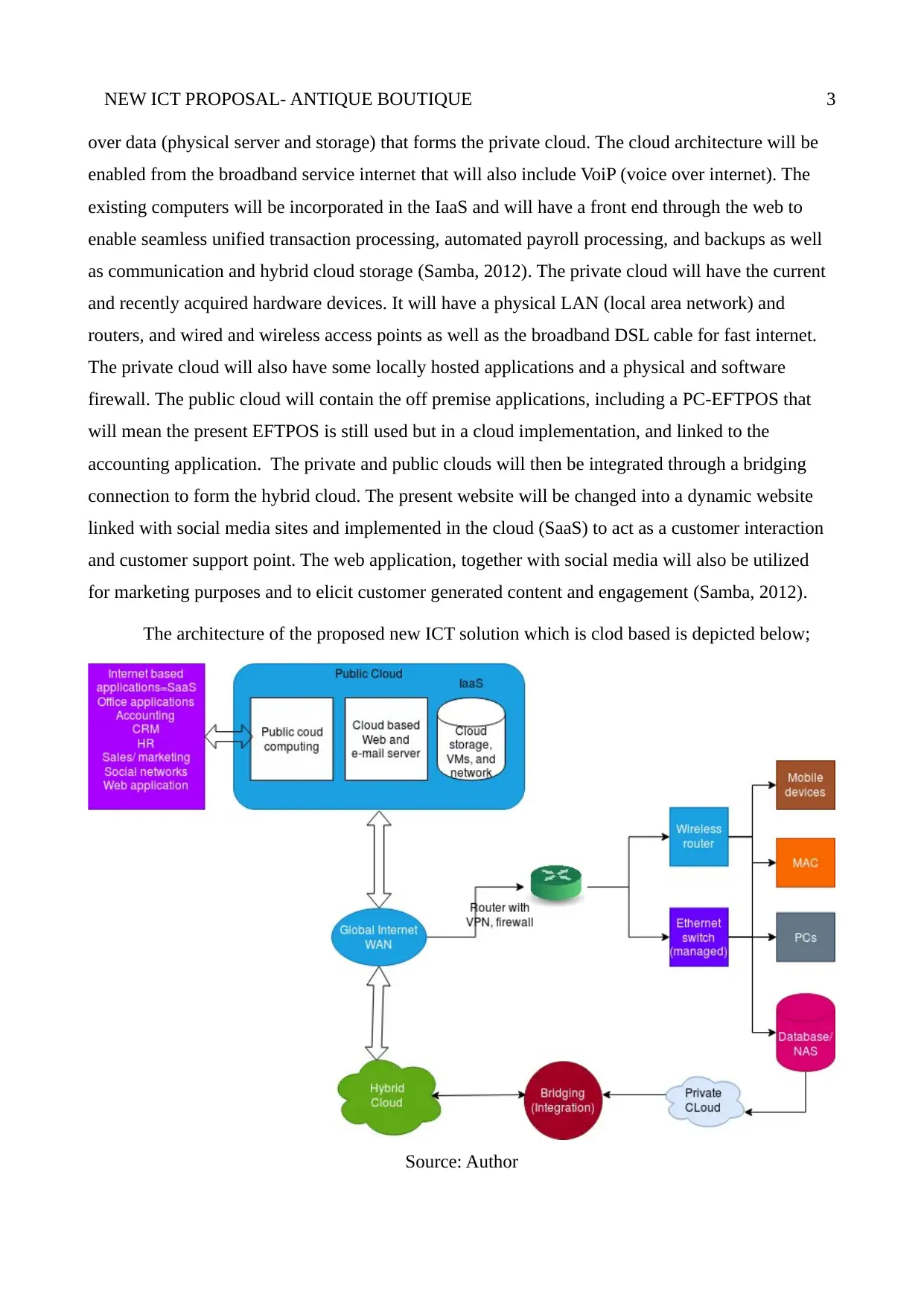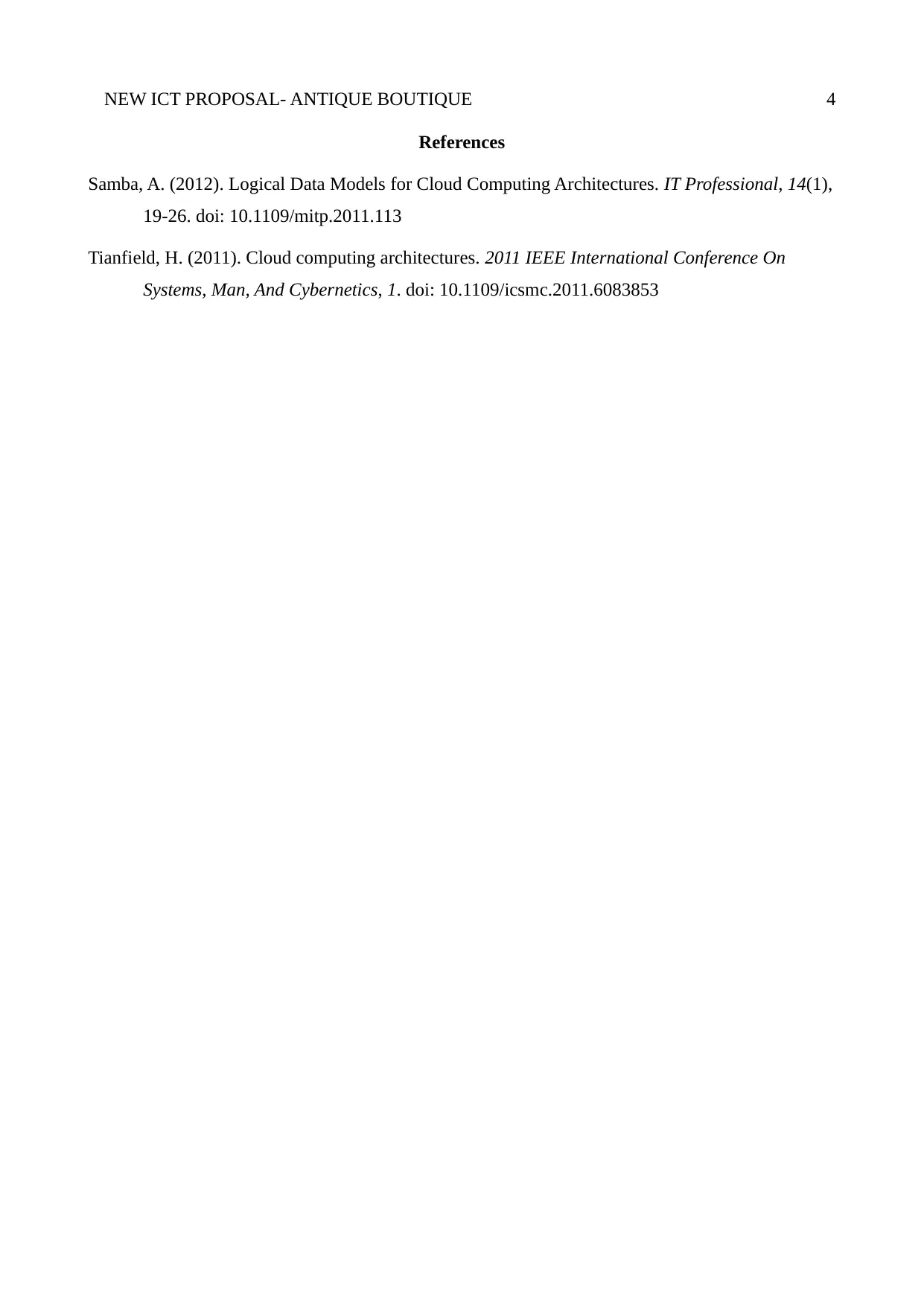FNS40217: Cloud Computing ICT Proposal for Business Operations
VerifiedAdded on 2022/08/15
|4
|667
|11
Project
AI Summary
This assignment is a new ICT proposal for implementing a hybrid cloud solution in a business environment. The proposal details a system that incorporates both Software as a Service (SaaS) and Infrastructure as a Service (IaaS) models. The SaaS component includes web-based applications such as accounting software, CRM, email services, HR applications, social media, and e-commerce capabilities, accessible via APIs. The IaaS component provides services like networking, storage, and virtualization, including virtual machines and scalable storage. The hybrid cloud architecture integrates a central data center with public cloud services for backup and control, supported by broadband internet and VoIP. The proposal also outlines the integration of existing hardware, a dynamic website linked with social media for customer interaction, and the utilization of cloud-based applications for various business functions. The proposal also references several sources to support the claims and design of the new ICT solution.
1 out of 4









![[object Object]](/_next/static/media/star-bottom.7253800d.svg)